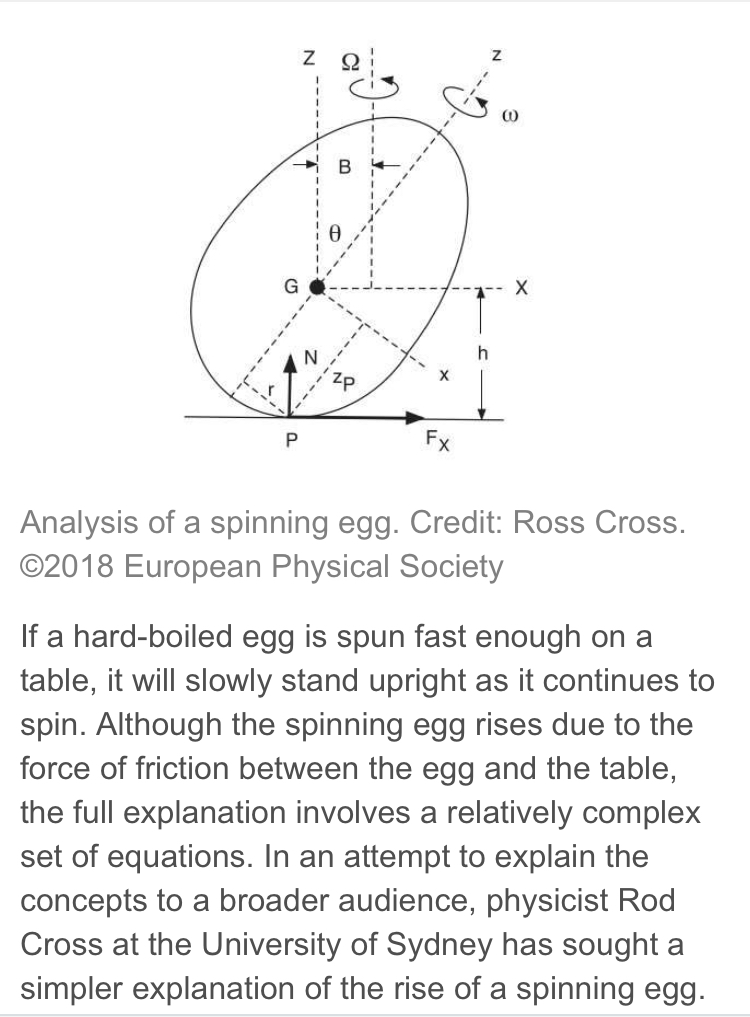
In the Spotlight
By Sharmini Jayawardena

Although spinning eggs have been studied for over years, there has not been a simple explanation for the rise of the spinning egg or the tippe top, i.e., not until now, Cross told Phys.org. “The essential physics cannot be conveyed to an undergraduate student👨🎓 or to a physics teacher by explaining that an egg rises because the equation predicted that it will rise.”?
“…experimental measurements to pin down the separate roles of sliding and rolling friction in causing the egg (or tippe top) to rise,” and then stop🛑 rising when not spun fast enough, have been few and far between.
The obvious rotation is in the direction in which it spins, on the vertical axis. “The egg also rotates in a horizontal axis as it stands up on its end”❗
“The new study shows that rotation about the horizontal axis is due to precession, and that the precession itself is due to the horizontal friction force. If the egg starts rolling, then the friction force drops to zero and the egg stops rising.”
“On the other hand, the precession of the spinning egg about the vertical axis is caused by the normal force (from the table pushing up on the egg), rather than friction.”
This experiment also confirmed another “related characteristic of the spinning egg: the faster the egg spins, the more vertical it stands.”
If the egg spins slowly, it will not rise at all, as there is no force of friction and the rotation slows, causing the egg to roll instead of slide and stand up.
‘Cross also found similar explanations for the inversion of a tippe top and the slow fall and rapid precession of spinning coins.’
Rod Cross – “Why does a spinning egg rise?” European Journal of Physics.
http://iopscience.iop.org/article/10.1088/1361-6404/aa997b
Dr Cross’ webpage on spinning eggs and tippe tops
www.physics.usyd.edu.au/~cross/SPINNING%20TOPS.htm
![]()



